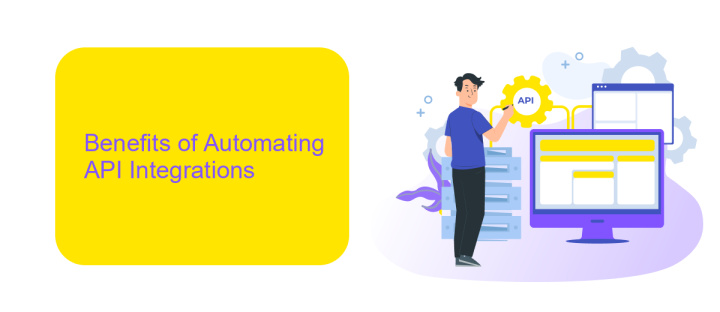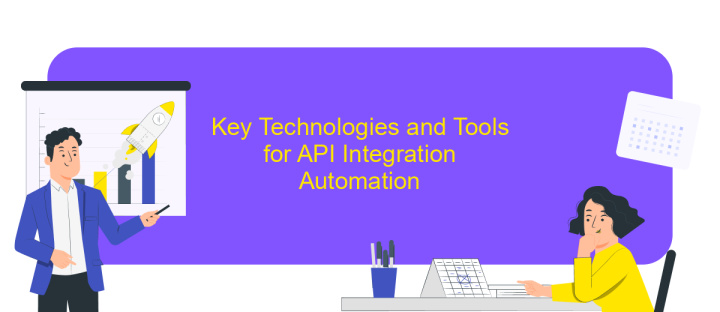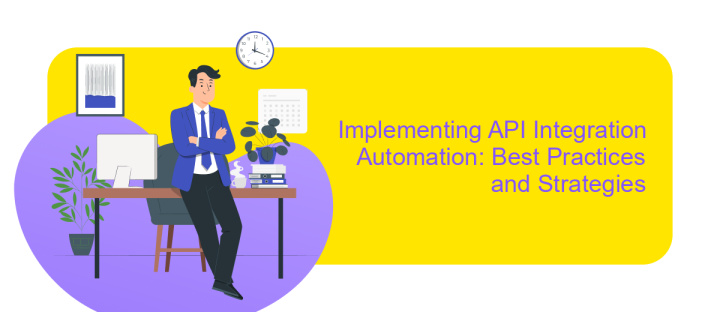API Integration Automation
API Integration Automation is revolutionizing the way businesses streamline their operations and enhance connectivity. By automating the integration of various software systems, companies can significantly reduce manual efforts, minimize errors, and improve efficiency. This seamless connectivity allows for real-time data exchange and better decision-making, ultimately driving innovation and growth. In this article, we explore the key benefits and strategies for implementing API integration automation effectively.
Understanding API Integration and its Challenges
API integration is a critical component in modern software development, enabling disparate systems to communicate and share data seamlessly. It allows businesses to enhance functionality, improve efficiency, and create more cohesive user experiences by connecting different applications. However, integrating APIs comes with its own set of challenges that developers must navigate to ensure successful implementation.
- Compatibility Issues: Different APIs may have varying protocols and data formats, leading to compatibility problems.
- Security Concerns: Ensuring secure data transmission and authentication can be complex, especially when dealing with sensitive information.
- Rate Limits: Many APIs impose limits on the number of requests, which can hinder performance if not managed properly.
- Error Handling: API responses can be unpredictable, requiring robust error handling mechanisms to maintain stability.
Despite these challenges, effective API integration can significantly streamline processes and enhance software capabilities. Developers must employ best practices such as thorough documentation review, comprehensive testing, and continuous monitoring to overcome these obstacles. By doing so, they can leverage the full potential of API integration, driving innovation and operational efficiency across various platforms.
Benefits of Automating API Integrations

Automating API integrations offers significant advantages for businesses looking to streamline their operations. By reducing manual intervention, automation minimizes human errors, ensuring more reliable and consistent data exchange between systems. This efficiency not only saves time but also allows teams to focus on more strategic tasks rather than routine data management. Moreover, automated API integrations can enhance scalability, as they can easily adapt to increasing data volumes without additional resource allocation, supporting business growth seamlessly.
Utilizing platforms like ApiX-Drive can further simplify the integration process. ApiX-Drive provides user-friendly tools that allow businesses to set up automated workflows without the need for extensive technical expertise. This accessibility enables companies to quickly implement and modify integrations as business needs evolve. Additionally, automated integrations facilitate real-time data synchronization, ensuring that all systems are up-to-date with the latest information, which is crucial for making informed business decisions. Ultimately, automating API integrations can lead to increased productivity, reduced operational costs, and enhanced business agility.
Key Technologies and Tools for API Integration Automation

API integration automation has become essential for modern businesses aiming to streamline operations and enhance connectivity between applications. Leveraging the right technologies and tools can significantly improve the efficiency and reliability of API integrations. Key technologies include REST and GraphQL, which provide flexible frameworks for building robust APIs. Additionally, the use of OAuth for secure authentication ensures that data exchange remains protected from unauthorized access.
- Postman: A popular tool for testing APIs, it allows developers to automate testing and monitor performance.
- Swagger: This tool assists in API documentation and provides a user-friendly interface for designing and testing APIs.
- Jenkins: As a continuous integration tool, Jenkins automates the deployment and testing of APIs, ensuring seamless integration.
- Zapier: Known for its ability to connect different apps, Zapier automates workflows by linking APIs without requiring extensive coding.
- Mulesoft: This platform offers comprehensive integration solutions, enabling businesses to connect applications, data, and devices seamlessly.
By implementing these technologies and tools, businesses can achieve efficient and scalable API integration automation. These solutions not only reduce manual effort but also enhance the accuracy and speed of data exchange across various platforms, driving innovation and operational excellence.
Implementing API Integration Automation: Best Practices and Strategies

Implementing API integration automation requires a strategic approach to ensure seamless connectivity and efficient data exchange between systems. It begins with understanding the specific needs of your organization and the capabilities of the APIs involved. Thorough planning and design are crucial to avoid common pitfalls and ensure scalability.
Once the groundwork is laid, the next step is to develop a robust testing framework. Testing ensures that the integration works as expected and helps identify any potential issues early in the process. Automated testing can significantly reduce the time and effort required for validation, ensuring that all components function harmoniously.
- Define clear objectives and requirements for the integration.
- Choose the right tools and platforms for automation.
- Implement strong security measures to protect data integrity.
- Continuously monitor and optimize the integration process.
Finally, consider the long-term maintenance of your API integration. Regular updates and monitoring are essential to adapt to any changes in the APIs or business needs. By following these best practices, organizations can achieve a reliable and efficient API integration automation process that supports their operational goals.


Future Trends in API Integration Automation
As the digital landscape continues to evolve, the future of API integration automation is set to be shaped by several key trends. One of the most significant is the increasing adoption of AI and machine learning technologies, which are expected to enhance the efficiency and accuracy of API integrations. By leveraging these technologies, businesses can automate complex processes, reduce human error, and improve decision-making capabilities. Furthermore, the rise of low-code and no-code platforms will democratize API integration, enabling non-technical users to create and manage integrations with minimal effort.
Another trend is the growing emphasis on security and compliance in API integration. As data breaches become more frequent, companies are prioritizing secure integration solutions. Tools like ApiX-Drive are at the forefront, offering robust security features and compliance with industry standards. Additionally, the shift towards microservices architecture is driving the need for more flexible and scalable integration solutions. This trend is likely to continue, as businesses seek to enhance agility and responsiveness in a rapidly changing market. Overall, the future of API integration automation promises to be dynamic, with innovations that will empower businesses to streamline operations and drive growth.
FAQ
What is API integration automation?
How does API integration automation benefit businesses?
What types of tasks can be automated with API integrations?
Is coding experience necessary for API integration automation?
How can I ensure the security of my data when using API integrations?
Apix-Drive will help optimize business processes, save you from a lot of routine tasks and unnecessary costs for automation, attracting additional specialists. Try setting up a free test connection with ApiX-Drive and see for yourself. Now you have to think about where to invest the freed time and money!

